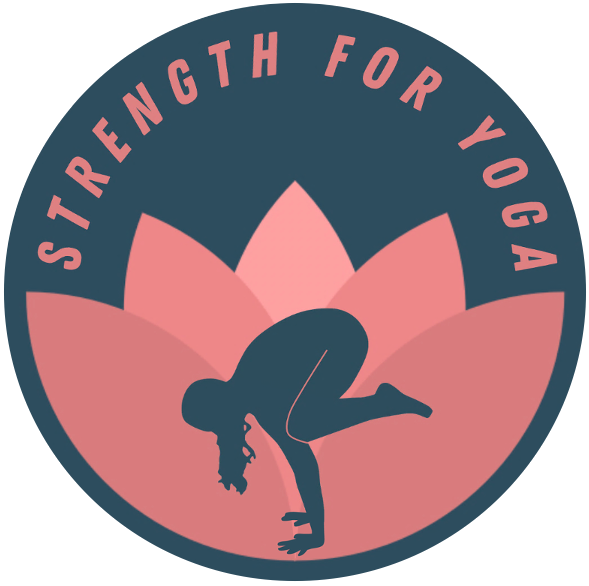How to Strengthen the Lower Back
This blog post was first sent to the Strength for Yoga email list as an email newsletter. Sign up for the SFY email newsletter here!
The low back is an interesting area of the body.
We tend to hear quite a bit about the low back when it comes to topics like back pain, back injuries, "correcting" low back posture, finding a "neutral" low back curve, etc.
But have you ever noticed that we don't tend to hear much about low back *strengthening*?
For example, there are lots of resources out there for how to strengthen areas like the quads, shoulders, abdominals, calves, and hamstrings.
But the low back doesn't seem to receive as much coverage as many of these other areas when it comes to strengthening and loading.
However, we do tend to hear a lot (we mean a lot! :) ) about the importance of core strength.
Did you know, though, that the low back is part of the core?
Although "the core" is sometimes casually referred to as the abdominals, the core actually consists of much more than just the four muscles that make up the abdominal wall.
While specific definitions for the core differ somewhat between sources, a working definition we like to use at Strength for Yoga is that the core consists of all of the muscles that surround and support the spine.
This expansive definition of the core includes the anterior, lateral, and posterior muscles of the spine – which brings us back to the low back and its role as part of the core.
[Side note: we talk at length about the anatomy, biomechanics, and cueing of the core in our podcast episode The Truth About Core Training. Tune in to learn all about this region with us!]
If having a strong core is important to you, then thoroughly targeting the 360° region around the spine should be a priority – and this includes intentionally strengthening the low back.
But how exactly do we strengthen the low back? 🤔
One important aspect to consider is that we can strengthen the low back either statically or dynamcially.
When we strengthen the low back statically, the muscles work while the low back holds still. In other words, our low back muscles work isometrically.
The yoga pose shalabhasana (locust pose) is an example of targeting the low back statically. Here, we lift our body up away from the floor and hold for several breaths:
On the other hand, we can also target our low back dynamically. When we strengthen this area dynamically, the muscles work while the low back moves. In other words, our low back muscles work concentrically and eccentrically.
An example of dynamic low back targeting would be a variation of shalabhasana in which we continually lift and lower into and out of the pose several times in a row:
As you can see, the low back moves into and out of extension dynamically as we repeat this pose multiple times.
For more on this topic, check out our video!
In this video, we discuss static vs. dynamic low back strengthening in more depth, and we also feature our 3 favorite Strength for Yoga exercises for low back strengthening. We hope you enjoy!
The low down on the low back
In conclusion, in the often overlooked realm of low back strengthening, understanding the dual modes of static and dynamic training is vital. Both static exercises, which target the low back isometrically, and dynamic exercises, which encourage concentric and eccentric work, play unique roles in bolstering the muscles that surround and support our spine.
As part of our core, the low back deserves as much attention and dedication as any other muscle group in our body. By incorporating exercises like these shalabhasana variations into our routine, we can promote a healthier, stronger, and more resilient low back.
Remember, a strong core isn't just about the abdominals – it's a 360° endeavor, and your low back plays a crucial role in that circle of strength. Keep exploring and keep strengthening!
You Might Also Like…






